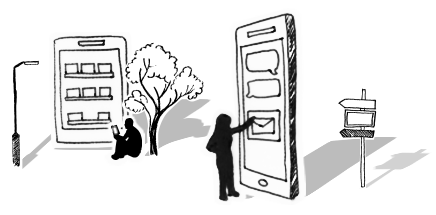




How to Get the Best Out of Internal Communications During Business Change
During a major business change and transformation there is often a need to bring in expertise and resource capacity from external consultancies to help successfully deliver, manage and embed change. As an external team, our aim is to quickly form strong alliances with the internal teams, including sponsors, the project and the business. However, we find over and over again, an untapped team in larger organisations is Internal Communications – and it’s them who can play a critical role in employee engagement activities. Although often involved at some stage of the change lifecycle it’s normally later when their lack of early involvement will prevent the project from getting the true value from this internal resource. A team who have deep knowledge and insights into the stakeholders, effective channels, the brand and other communications activity taking place. It seems obvious to get this team involved, the trick is to do this early.
What is the impact of not engaging teams early?
It’s important to engage internal teams early to get them on-side to support the business change and identify the areas where they can add most value. A tip to remember is that they have a role to play, and should understand what this is. We have often witnessed teams or individuals who are not engaged at the outset become blockers to effective communications. This may mean opportunities are missed in using the organisation’s flagship communication channels. Communications teams may possibly question the role of external consultants and feel a sense of encroachment. Of course this isn’t really the case as the change team are deployed to focus entirely on a particular project and use their specialist experience to maximise successful adoption, utilising several different disciplines along the way.
So how can Internal Communications support the business change team and what are the benefits to the project? Here are 4 helpful insights to engage Internal Communications.
1. Share the business drivers and goals.
Sharing the common goals and purpose of the project will quickly engage Internal Communications and ensure they are united behind this vision. This can help manage other communications activities and ensure everything is aligned – avoiding mixed or conflicting messages. Getting this team behind the project early will establish valuable advocates, an extremely useful resource when setting up your change network.
2. Get under the skin of the impacted audience groups.
We know people make change happen and getting to know the most affected audience groups increases the effectiveness of communications. This enables the change strategy to be highly targeted, addressing specific needs and resistance. Internal communications can help to accelerate this discovery activity. They should already have details of the most impacted audiences and can advise on key attributes, effective channels and potential blockers/enablers, feeding into the stakeholder analysis and messaging framework. They have often formed relationships with the stakeholders so useful for introductions.
3. Be creative and design communications that are impactful and effective.
Brand integrity is critical for all organisations, that’s a given, but for internal audience purposes allow the creative identity of the project to push the boundaries and stand out from the norm. It’s important to create meaningful themes and messages that the target audience groups can relate to rather than seeing another corporate message. For business change teams, not involving Internal Communications early in the creative process can, firstly, hold up the process while they get aligned but secondly and more critical, create resentment which can disable any ideas of being creative and different. We know when delivering complex messaging or changes affecting people, the communications have to stand out and be highly relevant. Involving the Communications team in new fresh approaches will get their endorsement and support.
4. Release the benefits.
The benefits don’t usually get realised until the change has landed and the project has been handed over to BAU. The role of Internal Communications is critical to reinforce the messages and ensure people remain supported. The communications strategy should evolve, measuring effectiveness and addressing any blockers and challenges. This team can help pull together the content and stories celebrating success and rewarding adoption. Internal Communications can play a key role in continuing to make change stick.
We are always happy to talk to internal teams about our approach, share any learnings or best practice so it can be a mutually beneficial experience.
At Afiniti we are passionate about leaving our clients a legacy of useful assets as well as increasing internal capability. There is nothing more rewarding than getting sustainable value from your investment including a well-equipped team for future projects who can add value from the beginning.
To get the latest change tips, advice and guidance directly to your inbox, sign up to our monthly Business Change Digest.

